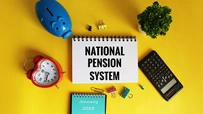RBI’s Home Loan Rules & Outlook: Repo Cut, Prepayment Freedom & What Borrowers Must Know
Disclaimer: This blog was updated on 10 June 2025. Since then, RBI has cut its repo rate further to 5.25%. This blog contains dated information pertaining to June's repo rate cut. That said, we've updated only the repo rate to 5.25% for clarity.
December 05, 2025

In December 2025, decided to cut the repo rate by 25 basis points that brought the benchmark down to 5.25%. That move—one of the steepest in recent memory—have pushed lenders to revisit how they price home loans.
But rate cuts alone don’t rewrite the rules of borrowing. Alongside it, regulatory shifts—especially around prepayment charges—are quietly reshaping the choices for homebuyers in a way few saw coming.
Repo Rate Cut: What Actually Happened in June
When the RBI’s Monetary Policy Committee met on June 6, 2025, the decision was striking: a 50 bps cut off the repo rate, bringing it down from 6.00% to 5.50%. The central bank also revised related rates: the Standing Deposit Facility (SDF) was lowered, and the Marginal Standing Facility (MSF) and Bank Rate were realigned upward to accommodate.
Why the big cut? Inflation had softened, giving the RBI room to lean into growth. Lenders, however, now have the challenge of transmitting that benefit to borrowers quickly and transparently.
How This Alters Your Home Loan Cost
For floating-rate home loans anchored to benchmarks, the path to lower EMIs is straightforward: a reduced repo resulting in lower benchmark rates and lower interest rate for borrowers.
If your loan resets quarterly, you could see the benefit in the next cycle. Many banks responded swiftly in mid-2025.
LTV Ceilings: Clarifying the Myths
To recap the LTV ceiling structure:
| Up to ₹30 lakh | Up to 90% finance |
| ₹30 lakh to ₹75 lakh | Up to 80% finance |
| Above ₹75 lakh | Up to 75% finance |
What Changed in Home Loan Prepayment Penalties?
In July 2025, RBI put a spotlight on an often-overlooked friction point: prepayment and foreclosure charges. It issued the Pre-payment Charges on Loans Directions, 2025, with an effective date of January 1, 2026.
Here’s what the new guidance does:
What 2025 Brings in Transparency & Lending Practices
Beyond rate cuts and prepayment reforms, 2025 is the year when lending began to get a little less mysterious.
Smart Moves for Home Buyers & Borrowers in 2025
Here’s how different groups should steer in this shifting landscape:
For New Homebuyers
Final Thoughts
2025 isn’t just another year. It’s a turning point. The RBI’s rate cut, paired with transparency and prepayment reforms, has nudged India’s home loan system toward more fairness and flexibility. Borrowers now have more levers — but success depends on reading the fine print, pushing lenders to comply, and structuring your loan with both agility and caution.
The best time to act is now — armed with clarity and a willingness to challenge opaque clauses. In a more borrower-friendly era, the ones who win will be as smart in their choices as the policymakers were bold in theirs.
Disclaimer:
The contents herein are only for informational purposes and generic in nature. The content does not amount to an offer, invitation or solicitation of any kind to buy or sell, and are not intended to create any legal rights or obligations. This information is subject to updation, completion, amendment and verification without notice. The contents herein are also subject to other product-specific terms and conditions, as well as any applicable third-party terms and conditions, for which Ujjivan Small Finance Bank assumes no responsibility or liability.
Nothing contained herein is intended to constitute financial, investment, legal, tax, or any other professional advice or opinion. Please obtain professional advice before making investment or any other decisions. Any investment decisions that may be made by the you shall be at your own sole discretion, independent analysis and evaluation of the risks involved. The use of any information set out in this document is entirely at the user’s own risk. Ujjivan Small Finance Bank Limited makes no representation or warranty, express or implied, as to the accuracy and completeness for any information herein. The Bank disclaims any and all liability for any loss or damage (direct, indirect, consequential, or otherwise) incurred by you due to use of or due to investment, product application decisions made by you on the basis of the contents herein. While the information is prepared in good faith from sources deemed reliable (including public sources), the Bank disclaims any liability with respect to accuracy of information or any error or omission or any loss or damage incurred by anyone in reliance on the contents herein, in any manner whatsoever.
To know more about Ujjivan Small Finance Bank Products Visit:"https://www.ujjivansfb.in"
All intellectual property rights, including copyrights, trademarks, and other proprietary rights, pertaining to the content and materials displayed herein, belong
to Ujjivan Small Finance Bank Limited or its licensors. Unauthorised use or misuse of any intellectual property, or other content displayed herein is strictly prohibited and the same is not intended for distribution to, or use by, any person in any jurisdiction where such distribution or use would (by reason of that person’s nationality, residence or otherwise) be contrary to law or registration or would subject Ujjivan Small Finance Bank Limited or its affiliates to any licensing or registration requirements.
FAQs
1. How soon after the June 2025 repo cut will my home loan rate fall?
If you have a floating-rate home loan linked to an external benchmark, the rate cut should reflect at the next scheduled reset interval (often quarterly). If the lender delays, you can request adjustment or explore refinancing.
2. Does the 90% LTV rule apply to all homebuyers?
The 90% LTV ceiling is available only for homes up to ₹30 lakh under RBI rules. Beyond that, the LTV cap drops to 80% (for ₹30–₹75 lakh) or 75% (above ₹75 lakh). This is not a 2025-only rule but a long-standing standard.
3. Will fixed-rate home loans also become penalty-free in 2026?
No. The RBI’s “Pre-payment Charges Directions, 2025” explicitly prohibit prepayment fees only on floating-rate loans (for individual borrowers, non-business) from January 2026. Fixed-rate and business-purpose loans may still carry charges—but such fees must be clearly disclosed.
4. If I have a hybrid/dual-rate home loan (part fixed + part floating), which part becomes prepayment-free?
At the time of prepayment, the floating-rate portion must have no penalty under the 2025 directions. If the fixed-rate portion is prepaid, charges may still apply according to the loan agreement.
5. Should I refinance or switch to floating now?
Refinancing may be a smart move if your current interest rate or spread is significantly higher. However, check prepayment fees, hidden clauses, or fixed-rate lock-in costs before making the move. Also consider whether future rate declines outweigh the cost of switching.








